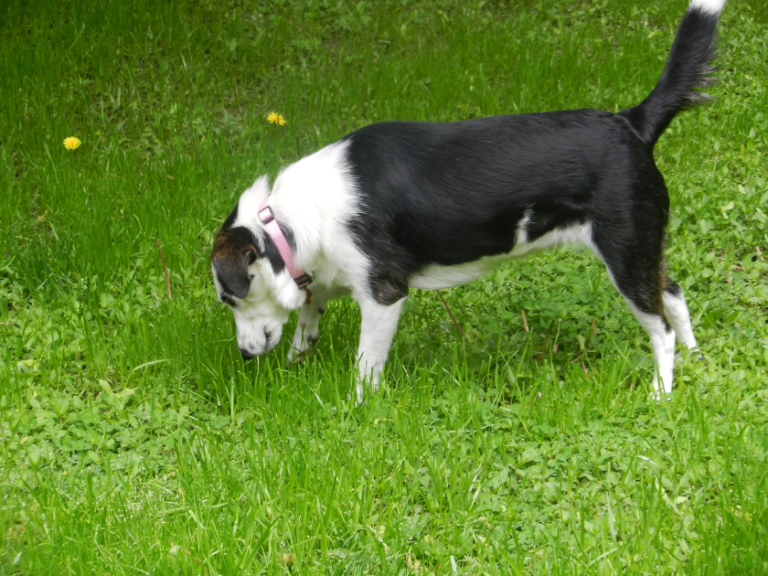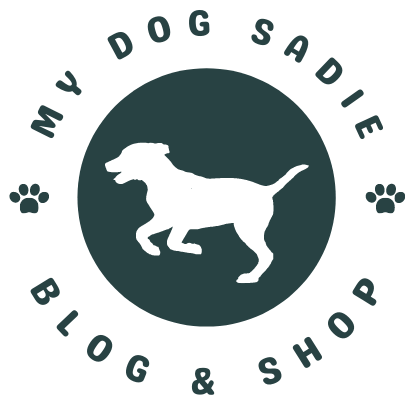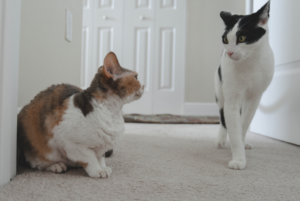No products in the cart.



Disclosure: we take pride in offering objective product reviews for which we have direct experience or we note when we do not have direct experience. When you purchase any of the reviewed products through links we provide, we may earn a commission.
Cats make great pets for households where one or both parents work away from the home. As many working adults unexpectedly became confined to the home offices during the pandemic, their cats were probably delighted to have more company during the day.
What better time to add a dog? Everyone is home for most of the day enabling families to give the extra time needed for owning a dog.
The truth about cats and dogs
Cats and dogs can get along really well in most instances, however there can also be some unexpected challenges. When we added Sadie to our all-cat home, it was just a matter of days before we uncovered a vexing problem. Sadie could not resist heading over to the litter box and snacking on the contents. Yes, we learned dogs love to raid the litter box and eat cat poop… Ew…
So… why does my dog eat cat poop?
The medical term for eating poop is Coprophagia. Dogs may be eating poop because they are malnourished, but the more likely reason is that dogs are scavengers by nature and cat poop simply smells a lot like cat food to them.
Owners in these blended families like ours need to prevent dogs from eating the cat poo for a lot of reasons.
- It’s gross
- Spreading remnant litter around the house exposes kids and people to feces
- Potential pathogens in the cats feces might be toxic to dogs.
Important to consider as well is the effect of litter-raids on the cats. Cats don’t like a large, loud dog rummaging through their litter boxes. They are very picky about the state and location of their indoor bathroom and having this go on can lead to the cat refusing to use the litter box.
There are specific approaches to preventing dogs from raiding the litter box and some commercially available tools. None are perfect, by themselves, but coupling together multiple strategies can really help. They fall into three main categories: Barriers, deterrents, and preventatives.
Keeping dogs out using barriers
These are tools and household modifications that work to simply prevent access of the dogs to the litter box. These require careful placement of the litter boxes into rooms or areas of the house that can then be blocked off from access by the dog. Laundry rooms and basements are common areas where there is little people traffic to be concerned with having to open the barrier frequently.
Here are some possible solutions
The Kitty Pass interior door is basically a framed cut out in an existing door. It accommodates cats up to 20 lbs and XL versions are available.
- What we liked: The Kitty Pass enables free access for the cat to a litter box through a closed door.
- Things to consider: Installing the Kitty Pass requires special tools to cut a hole in a door which also requires you have permission to do so, which is a problem for renters. It also is not such a great barrier for smaller dogs, who can easily squeeze right through.
Carlson Pet Products makes a Walk Through Pet Gate that has roughly 8 X 8 inch pass through door. This can be a great alternative to the Kitty Pass for when a closed door solution is not available.
- What we like: Carlson makes a tall version that can help prevent larger dogs from just going over the top. Pressure mounting and width extensions makes it a great product for rental units where pet parents can’t modify the doorway
- Things to consider. Similar to the Kitty Pass, smaller dogs can learn to go right through.
Top loading litter boxes – Litter boxes that require the cat to enter from the top are a great choice and one that has worked for us. We liked this one made by ModKat.
- What we liked: Top loading boxes reduce tracking of litter and can be more attractive in common spaces.
- Things to consider: Its not a great barrier to larger dogs and some cats won’t adjust to the top loading design. One of our cats was simply too large for this one, so its best for smaller to mid-sized cats.
Deterrants that scare dogs away from litter box
These methods keep the dogs from approaching the litter box either by causing a negative experience associated, or by simply removing the good stuff before it’s discovered
PetSafe Pawz Away – This uses radio waves over a radius of 3 meters. When the dog enters the zone, it’s warned first and then shocked or buzzed if it’s wearing a special collar. We are not particularly fans of shock collars, though for many dogs they can be really effective.
- What we liked: We’ve not tried this approach, though other online reviews praise the effectiveness. The Pawz Away device also isn’t limited to use at litter boxes and could work for counters and other off limits parts of the house.
- Things to consider: A special collar is required which will have to be worn all the time. Its best to use only when a barrier is not possible as the 3 meter radius is quite large and could trigger at times when the dog is even in another room from the device.
Tools to prevent dogs from developing the habit of eating cat poop
Our favorite preventative tool are automated litter boxes. These remove the waste quickly after the deposit which gives dogs very little chance to plan and execute their raid. The best part of owning one of these is it makes your life easier by not having to scoop, but smarter dogs just learn to work more quickly. Not all cats adapt well to a new litter box, especially one with moving parts, so it’s best to maintain a traditional box for a while until you know it will be accepted.
We installed a Cat Genie which hooks into a toilet or other waste water line to flush waste away.
- What we liked: Cat Genie doesn’t require maintaining a waste container as it uses water to remove the waste.
- Things to Consider: It requires a special plastic based litter and each cycle is a bit long ( we timed it to take about 38 minutes to “flush”). But having at least one box I don’t have to scoop is well worth it.
A couple other common automated litter boxes that are a bit more budget friendly are the PetSafe ScoopFree Ultra Cleaning litter box and the Litter Maid Self Cleaning litter box.
With the ScoopFree box, the liquid waste absorbes into special litter and the solid waste is quickly whisked away into a container.
- What we liked: The trays with prepacked litter are really convenient for changing out. The motion sensor ensures it doesn’t start the cleaning cycle until the cat is long gone.
- Things to consider: Not all cats accept the different type of litter and the costs of continuing to buy the special litter trays can really add up.
With the LitterMaid automated litter box, the owner uses regular scooping liter which is automatically raked into a container.
- What we liked: Uses more standard scooping litter and it adds a little tracking ramp to catch flying litter
- Things to consider: The surface area is smaller tha a standard litter box, but there is a “multiple cat” version. Also the waste container fills quickly and needs to be monitored
Note: With any of these automated litter boxes, if the dog already has a taste for the product, they will likely learn to stalk the cat when it enters the box and catch the product before its scooped. The best time to use this approach is to prevent the dog from ever noticing the product in the first place
Food additives as prevention
Preventatives also include food additives that pet owners can add to the food of the cat to make its poop less appealing. One of these is ForBid(™) coprophagia deterrent has been around for a while. Its not really clear what is the magic ingredient in ForBid, but it claims to work for both cat feces and dog feces by sprinkling on top of their food.
Other possible food additives that have worked for others include Meat tenderizer or MSG sprinkled on the cat food can also help to make the feces less appealing. We have not tried any of these remedies, and highly recommend talking to your vet before adding anything to the cat’s food.
Multiple solutions (and patience) required
Most families use more than one solution depending on the situation. They may have a top loading litter box, a closed door with cat hole, and baby gates to prevent access, and turn front loading litter boxes towards the wall and be diligent about scooping immediately after the cat poops. We had to try many solutions to cut down on the raids, but they still happen from time to time, because let’s face it, dogs are smart scavengers.
Whatever way you choose to try, you will need a lot of persistence and patience.
Disclosure: we take pride in offering objective product reviews for which we have direct experience or we note when we do not have direct experience. When you purchase any of the reviewed products through links we provide, we may earn a commission.
Newsletter Updates
Enter your email address below to subscribe to our newsletter









